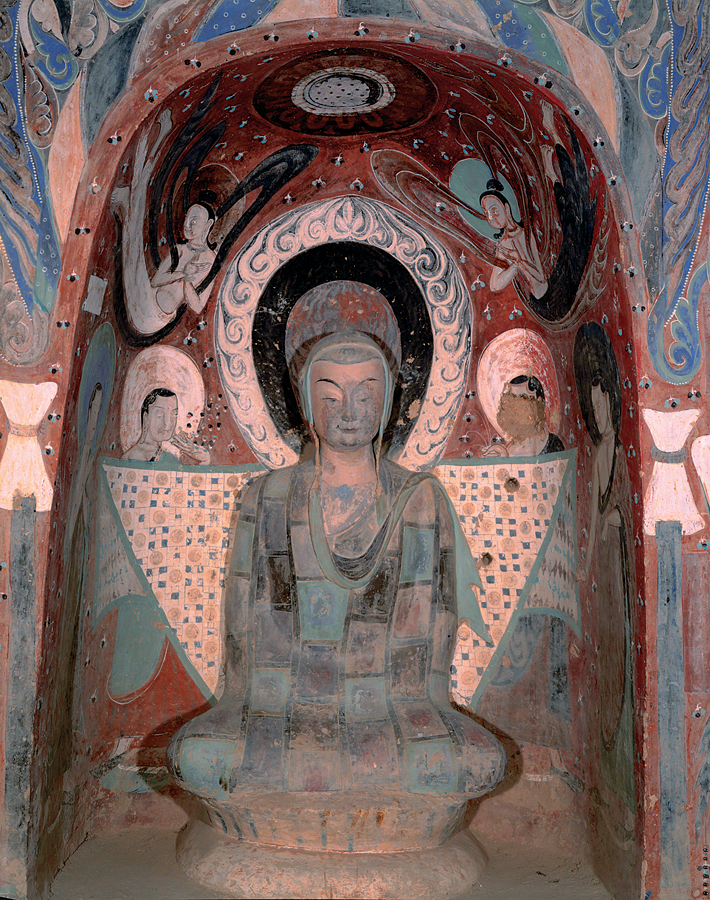A History of World Societies:
Printed Page 190
A History of World Societies Value
Edition: Printed Page 187
The Appeal and Impact of Buddhism in China
Why did Buddhism find so many adherents in China during the three centuries after the fall of the Han Dynasty in 220? There were no forced conversions, but still the religion spread rapidly. In the unstable political environment, many people were open to new ideas. To Chinese scholars the Buddhist concepts of the reincarnation of souls, karma, and nirvana posed a stimulating intellectual challenge. To rulers the Buddhist religion offered a source of magical power and a political tool to unite Chinese and non-
The monastic establishment grew rapidly in China. Like their Christian counterparts in medieval Europe, Buddhist monasteries played an active role in social, economic, and political life. By 477 there were said to be 6,478 Buddhist temples and 77,258 monks and nuns in the north. Some decades later south China had 2,846 temples and 82,700 clerics. Given the importance of family lines in China, becoming a monk was a major decision, since a man had to give up his surname and take a vow of celibacy, thus cutting himself off from the ancestral cult. Those not ready to become monks or nuns could pursue Buddhist goals as pious laypeople by performing devotional acts and making contributions to monasteries. Among the most generous patrons were rulers in both the north and south.

In China women turned to Buddhism as readily as men. Although birth as a female was considered lower than birth as a male, it was also viewed as temporary, and women were encouraged to pursue salvation on terms nearly equal to those of men. Joining a nunnery became an alternative for a woman who did not want to marry or did not want to stay with her husband’s family in widowhood. (See “Listening to the Past: Sixth-Century Biographies of Buddhist Nuns.”) Later, the only woman ruler of China, Empress Wu, invoked Buddhist principles to justify her role (see “The Tang Dynasty, 618-907”), further evidence of how Buddhism brought new understandings of gender.
Buddhism had an enormous impact on the visual arts in China, especially sculpture and painting. Before Buddhism, Chinese had not set up statues of gods in temples, but now they decorated temples with a profusion of images. Inspired by the cave temples of India and Central Asia, Buddhists in China, too, carved caves into rock faces to make temples.
Not everyone was won over by Buddhist teachings. Critics of Buddhism labeled it immoral, unsuited to China, and a threat to the state since monastery land was not taxed and monks did not perform labor service. Twice in the north orders were issued to close monasteries and force monks and nuns to return to lay life, but these suppressions did not last long. No attempt was made to suppress belief in Buddhism, and the religion continued to thrive in the subsequent Sui and Tang periods.